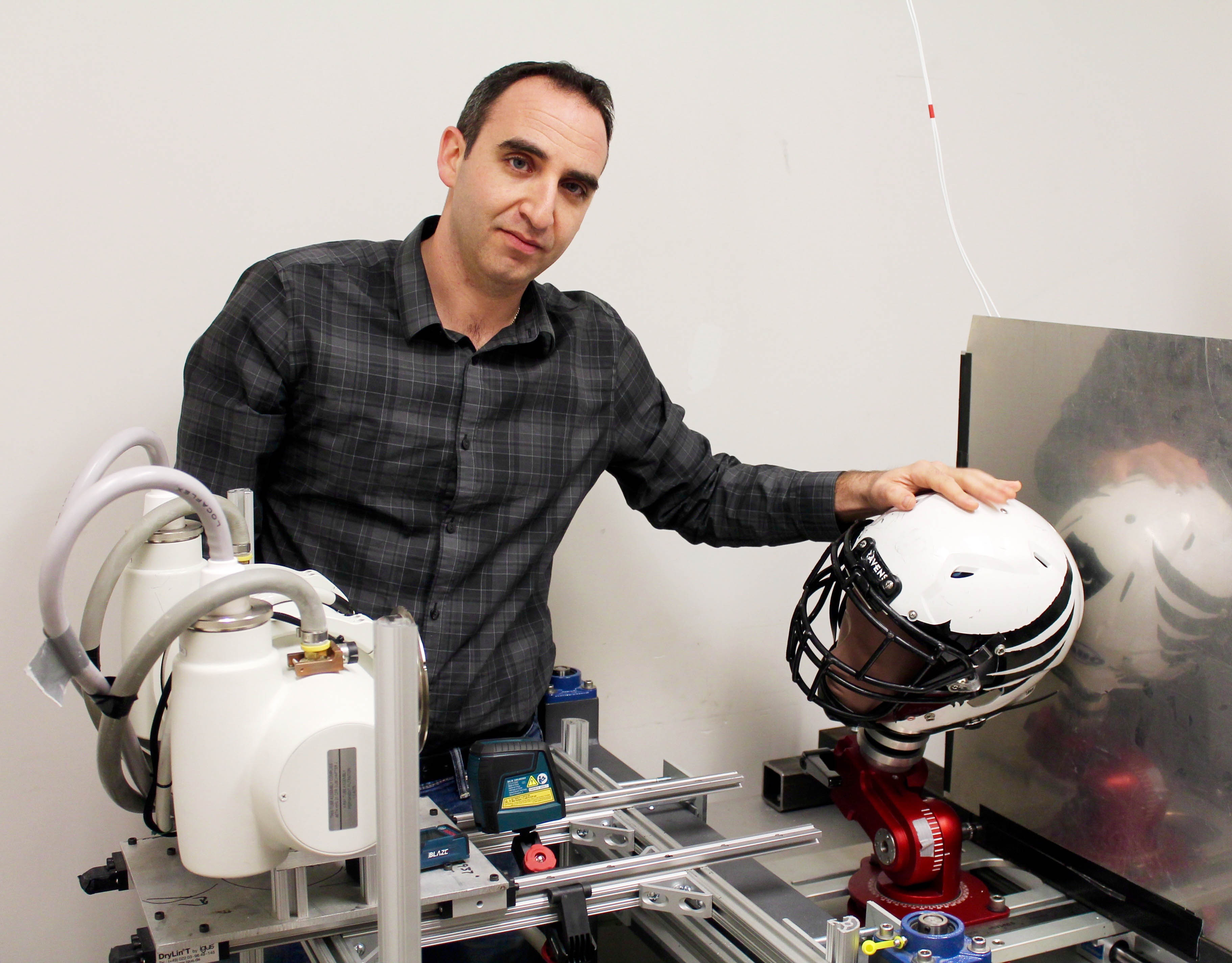Carleton University professor Oren Petel’s groundbreaking research is aiming to make helmets safer for those playing sports.
Petel, who specializes in mechanical and aerospace engineering, has developed, to his knowledge, the world’s fastest lab-based x-ray machine. The machine is rivaled only by the Canadian Light Source in Saskatchewan.
The camera can capture images at 7,500 frames, reaching a maximum of 10,000 frames, and shows what happens to the inside of a helmet when hit.
Petel, who has been working on the project for almost nine years, became interested in injury biomechanics while studying for his PhD.
“I started attending different talks and realized there was a big gap. People didn’t really have a way of measuring certain types of responses in the body, and [I] started to think about how we could do that,” Petel said.
With a minimal background in x-ray design, Petel dedicated his research towards the field and began pursuing the machine when he became a professor.
“I started saying: well, it’d be nice if we could take an image of the body and look internally to see how things are deforming . . . So, of course, that brings us immediately to x-ray because, for an impact event, ultrasound could work but I felt x-ray might have been the better approach,” he said.
Despite calling it “a high-risk endeavour at the time,” Petel has been able to secure funding from the Canada Foundation for Innovation and the Ontario Research Fund as a member of Carleton’s faculty. It’s a drastic difference from 2011, however, when Petel struggled to seek funding as a private company.
“I met with a bunch of people [and] said, ‘Here’s my plan. Here’s what I’m going to try to do.’ And they laughed at me and told me that it’s impossible to build an x-ray system that would go that fast.” Petel said.
“Fast forward all these years and, well, I guess I was right.”
After receiving the proper funding, Petel and his team were able to build the system in just over two years and has since become operational since October 2017.
So far, Petel said he has tested about four different football helmets, six hockey helmets, and even a variant of a military helmet. One of the football helmets was donated by the CFL’s Ottawa REDBLACKS several years ago after the team “had no use for it.”
Two weeks ago, Petel invited the team’s equipment manager down to observe a demo of the machine to see how helmets deformed during the event of an impact.
“I figured it would be a nice learning experience for them and hopefully, it can translate to safer activities or more information that they can provide to their players who are deciding which helmet to use,” Petel said.
Among the members of his team are Sheng Xu, Ashley Mazurkiewicz, Scott Dutrisac, Mackenzie Brannen, and Karen Taylor. Petel said without the help of his team consisting of mostly undergraduates, graduates, and post-doctorates, none of this would have been possible.
“At the end of the day, graduate students are the ones who are in the lab doing most of the work . . . professors don’t have the time to go and turn all the nuts and bolts and get the experiments underway, and I absolutely rely on them.” Petel said.
Taylor, a postdoctorate fellow at Carleton, was introduced to the system after working on a joint project with Petel through her previous supervisor.
She came onto the team last November after finishing her PhD in head impact mechanics and helmet design at the University of Ottawa.
Over the last three months, Taylor has used this opportunity to answer questions she had about brain tissue investigation.
“Over those five years [at Ottawa], there was a lot of impact that I noticed in a lot of design elements that I wish I could have seen inside the helmet,” Taylor said.
“Because you make these design changes, you measure their response . . . but you don’t know what’s happening inside of the helmet that’s creating that response necessarily.”
As for the project’s long-term goal, Petel is hoping to work with companies to help reduce concussion and head trauma in athletes, and improve the way helmets are certified.
Most importantly, Petel wants to expand the project’s capabilities and help put Carleton on the map for helmet design and injury evaluation.
“New testing machines, bigger testing machines, multiple x-ray heads for each of those testing machines that we can do these types of experiments just with kind of [a] broader range of possibilities in terms of how we’re loading these helmets,” Petel said.
While Taylor is grateful for receiving the opportunity to learn more about high-speed x-ray, she hopes this new system will be able to make sports safer for everyone.
“I think what’s the key message out here is that this system isn’t really going to, it’s not to replace any other systems . . . this is another tool that can be used to improve helmet testing and design and it’s going to really make a safer helmet eventually.”
Photo by Grant Vassos
Video courtesy of Oren Petel and Carleton University






